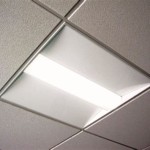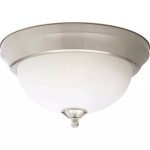Essential Elements for the Perfect False Ceiling Design for Your Office
False ceilings, often referred to as suspended ceilings, have become a ubiquitous design element in modern offices. They offer both functional and aesthetic benefits, contributing to a productive and visually appealing workspace. When choosing a false ceiling design for your office, there are several crucial factors to consider to ensure the best possible outcome.
1. Purpose and Functionality
The primary purpose of a false ceiling is to conceal unsightly elements such as electrical wiring, ventilation ducts, and piping. By creating a clean and organized ceiling plane, you can enhance the overall aesthetic of the space. Additionally, false ceilings can improve acoustics, reduce noise levels, and enhance thermal insulation, creating a more comfortable and productive environment.
2. Material Selection
The choice of material for your false ceiling has a significant impact on its appearance, durability, and acoustic performance. Common materials include gypsum boards, mineral fiber tiles, and metal panels. Gypsum boards provide a smooth and seamless finish, while mineral fiber tiles are known for their sound-absorbing properties. Metal panels offer a more contemporary look and are available in various finishes and colors.
3. Grid System
The grid system supports the false ceiling panels and provides the framework for their installation. It is typically made of galvanized steel and comes in various sizes and configurations. The choice of grid system depends on the type of false ceiling panels used and the desired ceiling height.
4. Lighting Integration
Lighting plays a crucial role in creating a functional and aesthetically pleasing office environment. False ceilings provide an excellent opportunity to integrate lighting fixtures seamlessly. Recessed downlights, linear lighting systems, and pendant lights can be strategically placed to provide optimal illumination and create a desired ambiance.
5. Access and Maintenance
Accessibility to the space above the false ceiling is essential for maintenance and repairs. False ceilings typically incorporate access panels or hatches that allow easy access to the hidden components. These panels should be placed strategically to ensure regular inspection and maintenance can be performed without disrupting the workspace.
6. Acoustics and Sound Absorption
In open-plan offices, noise control is a critical consideration. False ceilings can be designed to absorb sound and reduce noise levels, creating a more conducive working environment. Perforated ceiling panels, acoustic baffles, and sound-absorbing materials can be incorporated into the design to mitigate noise pollution.
7. Aesthetics and Customization
False ceilings offer a versatile canvas for customization and personalization. Different panel designs, finishes, and colors can be combined to create a unique and visually appealing ceiling. Patterns, shapes, and textures can be incorporated to add interest and reflect the company's brand identity.
Conclusion
Choosing the right false ceiling design for your office requires careful consideration of various factors, including purpose, functionality, material selection, grid system, lighting integration, access and maintenance, acoustics, and aesthetics. By incorporating these essential elements, you can create a false ceiling that not only enhances the appearance of your office but also contributes to a productive and comfortable workspace.

10 Inspiring False Ceiling Designs To Elevate Your Office Spaces Nerolac

12 Modern Office Ceiling Designs With Trending Pics In 2024

Office False Ceiling Design Excel Furniture

Office False Ceiling Design Ideas How To Select The Best For

33 False Ceiling Designs For Office Better Ivity Building And Interiors

Office False Ceiling Service

Add Elegance To Your Workspace With False Ceilings Saint Gobain Gyproc

33 False Ceiling Designs For Office Better Ivity Building And Interiors
8 Modern Office Ceiling Designs And Ideas

Office False Ceiling Commercial Design Ideas For Interior








